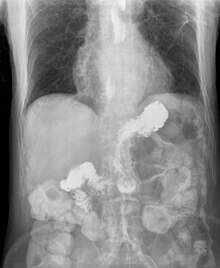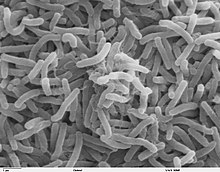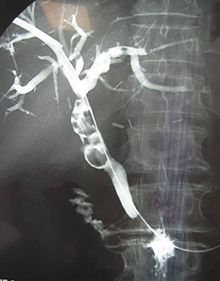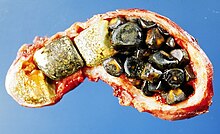Medical Physiology/Gastrointestinal Physiology
Introduction
[edit | edit source]Gastrointestinal Physiology looks at the functioning of the Gastro-Intestinal (GI) system. The four basic functions of the GI system are digestion, absorption, motility and secretion. Digestion describes how ingested food is broken down into smaller biochemical components; absorption how the products of digestion are absorbed into the body; motility how food and waste products are moved from mouth to anus; and secretion how digestive juices etc. are controlled and secreted. About 9 liters of fluid pass through the GI system every day, and of these only two are taken by mouth, the rest represents secretions by the system itself.
The whole is under the control of the hormonal and nervous systems, although the GI system has it's own autonomous nervous system, the enteric nervous system.
The digestive system is the body's major interface with the out side world, and as such it is richly supplied with immune cells, indeed by some estimates 80% of the bodies immune cells are in the GI tract.
The Liver & Portal System
[edit | edit source]
Pancreas
[edit | edit source]The Large Intestine
[edit | edit source]Regulation of GI Functions
[edit | edit source]Autonomic Nervous System
[edit | edit source]Enteric Nervous System
[edit | edit source]GI Hormones
[edit | edit source]Paracrines
[edit | edit source]Clinical Physiology
[edit | edit source]Esophageal Reflux
[edit | edit source]Gastroesophageal reflux disease (GERD), Gastro-oesophageal reflux disease (GORD), Gastric reflux disease, or Acid reflux disease is defined as chronic symptoms or mucosal damage produced by the abnormal reflux in the esophagus.[1]
This is commonly due to transient or permanent changes in the barrier between the esophagus and the stomach. This can be due to incompetence of the lower esophageal sphincter, transient lower esophageal sphincter relaxation, impaired expulsion of gastric reflux from the esophagus, or a hiatus hernia. If the reflux reaches the throat, it is called laryngopharyngeal reflux disease.

Pancreatitis
[edit | edit source]Pyloric Ulcers
[edit | edit source]Graft v. Host Disease
[edit | edit source]Lactose Intolerance
[edit | edit source]High Fructose Diets
[edit | edit source]Cholera
[edit | edit source]
jaundice
[edit | edit source]


Coeliac Disease
[edit | edit source]
